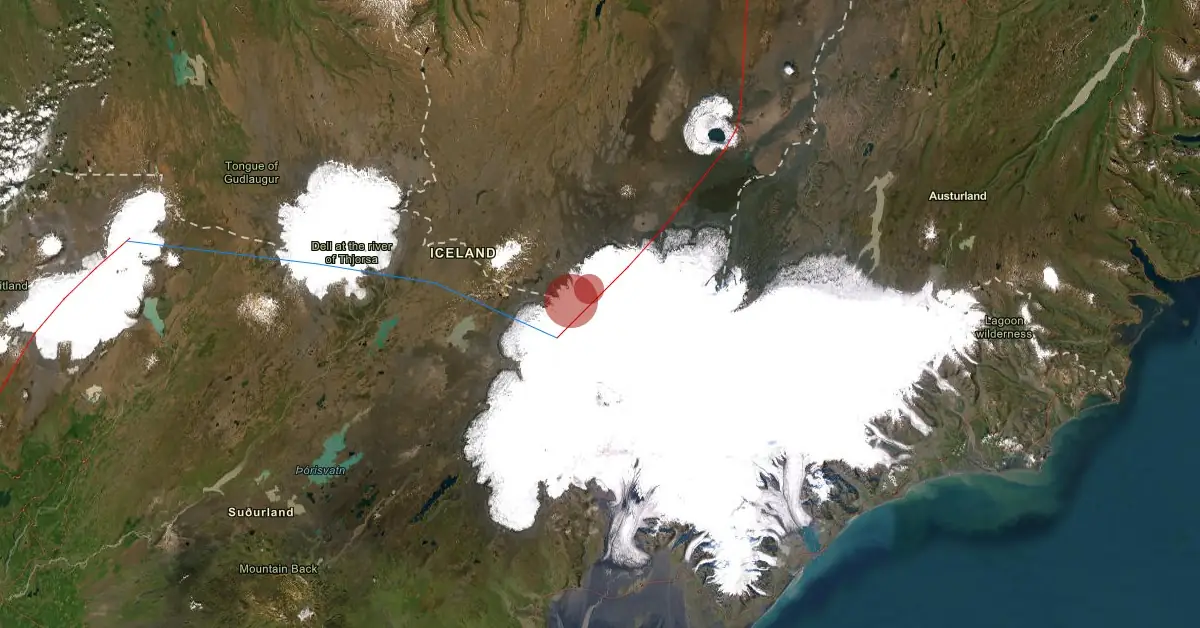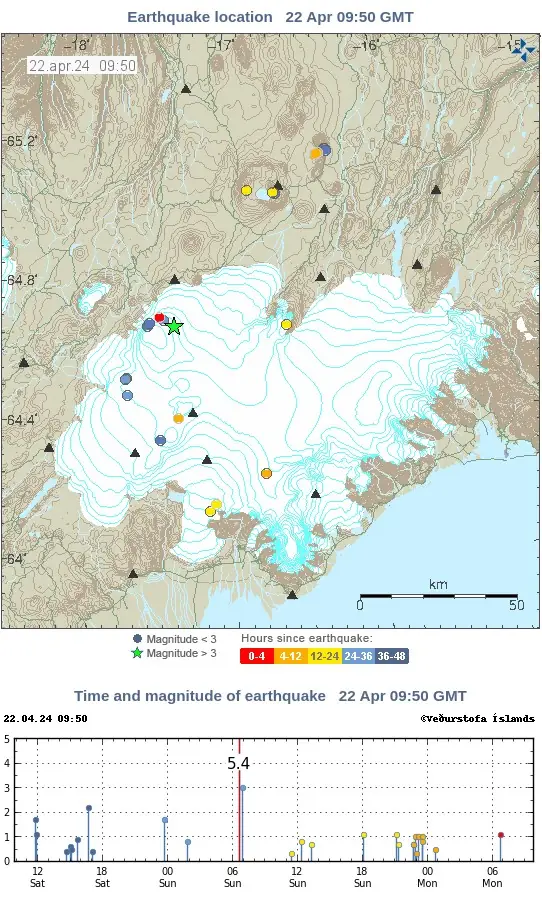Strong M5.4 earthquake hits Bárðarbunga caldera – the largest since the eruption in Holuhraun ended in 2015, Iceland

A significant earthquake with a magnitude of 5.4 hit the Bárðarbunga caldera in Iceland on April 21, 2024, marking the largest seismic event in the area since the 2015 Holuhraun eruption. This event was followed by a smaller M3.0 aftershock, but no further seismic activity has been reported.
The earthquake occurred at 06:37 UTC at a depth of 0.1 km (0.06 miles) — centered in the Bárðarbunga caldera, an area known for its volcanic activity. A smaller aftershock, measuring M3.0 hit the same area at 06:53 UTC at a depth of 0.9 km (0.5 miles).
There has been no further increase in volcanic activity, and the Aviation Color Code remains at Green, indicating no immediate threat to air travel.
The most notable recent activity at this volcano was the 2014/15 Holuhraun eruption, which was preceded by a series of significant earthquakes. During this event, vast amounts of lava erupted, making it the largest basaltic lava flow in Iceland since the Laki eruption in 1783 – 1784.
The Holuhraun eruption had notable environmental and atmospheric effects as it released a massive cloud of sulfur dioxide (SO2), which affected air quality over Iceland and parts of Europe.

Bárðarbunga is a large central volcano located beneath the northwestern section of the Vatnajökull icecap in Iceland, featuring a complex geological structure.
It is positioned northwest of the Grímsvötn volcano and is distinguished by its extensive subglacial caldera, which reaches a depth of 700 m ( 2 297 feet). The volcanic system is extensive, with associated fissure systems including the Veidivötn and Trollagigar fissures. These fissures stretch about 100 km (62 miles) southwest toward the Torfajökull volcano and 50 km (31 miles) northeast toward the Askja volcano.
Historically, Bárðarbunga has been the source of significant volcanic activity. The Veidivötn fissure system is especially prolific, having produced some of the most extensive fissure eruptions during the Holocene. One notable event is the Thjorsarhraun eruption, which is recognized as the largest known Holocene lava flow on Earth, with a volume of more than 21 km³ (approximately 13 mi³). The most recent major eruption from this fissure occurred in 1477, which also resulted in a substantial tephra deposit.
Additionally, the Loki-Fögrufjöll volcanic system, part of the larger Bárðarbunga volcanic framework, includes two subglacial ridges extending from the predominantly subglacial Hamarinn central volcano. The Loki ridge extends northeast, while the Fögrufjöll ridge stretches southwest.
The geological activity at Bárðarbunga holds significant implications for the region, particularly concerning jökulhlaups, or glacier-outburst floods. These floods can occur during eruptions and have the potential to affect drainages in all directions, posing risks to the surrounding landscapes and communities.
References:
1 Earthquake in Bárðarbunga caldera – IMO – April 21, 2024
2 Bárðarbunga – Geological summary – GVP – Accessed April 22, 2024
Featured image credit: TW/SAM, ESRI

Commenting rules and guidelines
We value the thoughts and opinions of our readers and welcome healthy discussions on our website. In order to maintain a respectful and positive community, we ask that all commenters follow these rules.